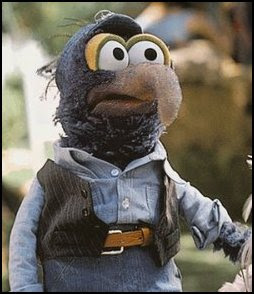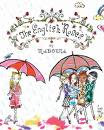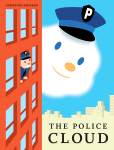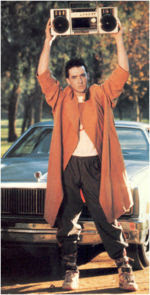new posts in all blogs
Viewing: Blog Posts Tagged with: James McCann, Most Recent at Top [Help]
Results 1 - 7 of 7
How to use this Page
You are viewing the most recent posts tagged with the words: James McCann in the JacketFlap blog reader. What is a tag? Think of a tag as a keyword or category label. Tags can both help you find posts on JacketFlap.com as well as provide an easy way for you to "remember" and classify posts for later recall. Try adding a tag yourself by clicking "Add a tag" below a post's header. Scroll down through the list of Recent Posts in the left column and click on a post title that sounds interesting. You can view all posts from a specific blog by clicking the Blog name in the right column, or you can click a 'More Posts from this Blog' link in any individual post.

By:
Michelle,
on 6/10/2010
Blog:
Orca Book Publishers Blog
(
Login to Add to MyJacketFlap)
JacketFlap tags:
Books,
Authors,
writing,
James McCann,
tae kwon do,
Orca Book Publishers,
Guest Author Blog,
Orca Sports,
Flying Feet,
Add a tag
 As a writer, I spend a very unhealthy amount of time sitting in a chair typing out the words that make my stories, or relaxing in that same chair reading a book or watching TV.
As a writer, I spend a very unhealthy amount of time sitting in a chair typing out the words that make my stories, or relaxing in that same chair reading a book or watching TV.
It hadn’t always been this way. At fourteen, I had begun martial arts training, but quit at nineteen. Almost twenty years later I was having a conversation one sunny Vancouver afternoon, while walking on the beach with a friend. I had been looking into various neighbourhood tae kwon do schools, seeking one that was about personal development and low-key training.
I told her the story of how, as a teenager, I had seen a movie called The Karate Kid, and joined the first tae kwon do school I saw. I didn’t do a lot of research—nor did I understand that there are differences not only between the arts, but also in the school’s philosophies. The first school I went to was very rough with the motto, “Kick first before he kicks you.” We were taught takedowns, leg kicks, and finger breaking—and were encouraged to use these techniques while sparring in the school.
The next school I went to was much different. It was about the tenets of tae kwon do—courtesy, integrity, perseverance, indomitable spirit, and self-control—and learning how to respect one another. After two years, I switched (on the advice from a friend) to full-contact kickboxing. This lasted for all of two weeks, when during a sparring match the instructor pointed at me and said, “Someone put that guy down.” It turned out that this kickboxing school had a grudge against the tae kwon do school where I had trained. In order not to get hurt, I had to put my opponent down with a quick kick behind his leg—a move I had learned from the first school.
During this walk on the beach, my friend listened intently to my story. “This should be your next book,” is what she finally told me. I used this as an excuse to push myself to get back into the dojang. I did find a great school here in Coquitlam, Peak Performance, where we have fun and learn how to better ourselves through martial arts.
Thanks to Flying Feet I have gone from being a couch potato, to being an orange belt in tae kwon do. Which is why I call this the book that saved my life.
James McCann will launch Flying Feet at the Cameron Rec Centre in Burnaby, BC, on Sunday, June 13. For all the details, check out the event invitation.


I found this interesting review on Amazon.com:
162 of 175 people found the following review helpful:
2.5 out of 5 stars I AM NOT A MONSTER!!! January 30, 2008
By Gonzo the Great "Creative Consultant" (Reno, Nevada) See all my reviews
 First let me say that I have great respect for Ed Emberley... but as a weirdo, I felt that it is my duty to say something. People have been making this mistake for far too long... so listen up: Weirdos are not Monsters!!!!
First let me say that I have great respect for Ed Emberley... but as a weirdo, I felt that it is my duty to say something. People have been making this mistake for far too long... so listen up: Weirdos are not Monsters!!!!
Just look at Emberley's list of so-called "weirdos": Vampire, Goblin, Cat, Monster, Witch, Devil, etc. As you can see, these are monsters, not weirdos. (Except for the cat... because cats are most definitely weird).
Now I'm not saying that weirdos can't be monstrous, because they can. And I'm definitely not saying monsters can't be weird cause there are some doozies out there (take this guy for example).
When it comes down to it, I'm not even sure exactly what weirdos are... but that's beside the point! My point is that weirdos are not necessarily monsters! So, basically, if Emberley changed the name of his book to Ed Emberley's Little Drawing Book of Monsters (Who Also Happen to be Weirdos), then I'd have no problem with it. In fact, I'm tempted to buy it anyways because I can get a used one for only 99 cents... and offensive or not, that's a bargain!!!

The Construction of Meaning and the Self De(con)struction of Identity: A Hippo-Critical Analysis of Jeff Newman's Hippo! No, Rhino!
Rosco P. Hargrove (Class of 2010)
English 421: Re-Introduction to Literary Criticism
Professor F. R. Zismer
Final Paper
Submitted on: December 22, 2007
Plot Summary
A mischievous zookeeper decides to have some fun and puts a sign that reads "Hippo" in front of the Rhino pen. This seemingly harmless bit of mischief wreaks havoc on the rhino's psyche as passersby continually refer to the rhino as "hippo". The rhino desperately tries to correct them, but to no avail. It isn't until a little boy comes along that things change. The child sees what's going on and changes the sign back to rhino. The book ends with the zookeeper continuing his mischievous ways by putting up a new sign that reads, "Porcupin-o".
Part I: Hippo! No, Rhino! Structuralism! No, Poststructuralism!
Newman's sparse use of language is deceptive. While he uses few words in his narrative, he manages to reveal deeper linguistic issues by drawing together some of the fundamental issues and conflicts in literary criticism.
As a starting point, the basic conflict in Hippo! No, Rhino! is clearly a re-creation of the tension between the structuralist and post-structuralist schools of thought. Newman's Hippo! No, Rhino! situation is an intriguing thought exercise which forces us to reconsider a fundamental question: Where does meaning come from?
Is it from the zookeeper (filling the archetypal role of trickster-god) who creates meaning by labeling the rhino as "hippo"? Or is his semantic subversion just a silly prank?
Is it the people reading the sign who give birth to meaning by creating the link between the sign ("hippo") to the signified (the rhino)? Or are they merely dimwitted automatons who will believe anything they read?
Is there even any meaning to begin with? Who are we (or the rhino) to say that "rhino" is the correct label? Isn't the polyphonic spree of letters and sounds that make up r-h-i-n-o ultimately as arbitrary as h-i-p-p-o?
Part II: Pedagogy of the Zoopressed
If we continue to peel away layers of this onion, we eventually find ourselves alone with the tear-jerkingly tragic figure of the "rhino".
(Note: Though it is awkward, I will refer to the rhino using the pronoun "it" because Newman's text does not indicate whether the rhino is male or female.)
(Full disclosure: Upon first reading, I subconsciously assumed that the rhino was a male, which tipped my hand as an unwitting co-conspirator in the phallocentricity embedded in our male-dominated society. I would like to assure you, professor, that based on last semester's readings on feminist theory and gynocritic analysis, I am sufficiently ashamed.)
Why is the rhino a tragic figure? Not only because it is helplessly tormented by the powerful zookeeper... that is but a minor offense. The true tragedy reveals itself with further examination of the sociolinguistic context of the rhino's self-identification.
The word "rhino," being of English (Anglo-Saxon) origin is obviously not the rhino's native tongue. Yet the rhino has come to identify itself as a "rhino," as evidenced by the psychological distress caused by the hippo sign. This self-identification through the language of his oppressor (and yes, he is oppressed... he is, after all, held captive and put on display) is one of major symptoms of oppression that is revealed by postcolonial theory.
The fact that the rhino clings so passionately and desperately to the name bestowed upon him by his captors, demonstrates the powerful role that language plays in perpetuating the inequalities of established social hierarchy. Not only does he accept his given name, he challenges anyone who dare disrupt the sanctity of his moniker. How can the rhino truly free itself from oppression if it lives, breathes, and thinks in the language of its oppressor?
This also sheds new light on the character of the child. As I mentioned in the plot summary, toward the end of the book a young child comes to the rescue, changing the hippo sign back to rhino.
Upon first reading, the child appears as a saviour figure who sympathetically changes the sign to ease the "rhino's" mind. The child's innocence allows him to see beyond the ridiculous sign and recognize the psychological harm being done to the rhino. And yet...
...and yet, perhaps it is not that simple. By reverting the sign (the linguistic tool of oppression), isn't the child merely reinforcing the domination of the status quo and strengthening the establishment's vice-like grip on society? The child may have acted to ease the rhino's mind but (despite the child's benelovent intentions), in actuality he played an active role in relegating the beast to an eternity of tranquil captivity. He did not rescue the rhino, he merely made his cage stronger.
Part III: Freedom Isn't Free or All Signs Point to "No"
Newman's stimulating text leaves the reader (at least this reader) with a final burning question... Who holds the key to the rhino's freedom?
The optimist's answer would be that the key to freedom lies with the rhino itself. Unfortunately, to quote Karl Marx, "Religion is the opium of the masses and optimism is the ecstasy tablet of the self-delusional." So no, the rhino does not hold the key to his own freedom.
The real answer is much simpler and much more sobering. The key to freedom lies with: the zookeeper. (Seriously, it's on the big key ring that's clipped to his belt buckle.)
This does not bode well for the rhino. At the end of the book, the zookeeper puts up a new sign next to the rhino that reads, "Porcupin-o". In doing so, this sadistic trickster god is assuring us that the rhino's nightmare is not over... and that no amount of lit crit is going to save him from an eternity in this semiotic purgatory. The helpless rhino (like the rest of us) is forever caught in that desolate place between meaning and just plain mean.
.jpg?picon=380)
By:
Mark,
on 12/30/2007
Blog:
Just One More Book Children's Book Podcast
(
Login to Add to MyJacketFlap)
JacketFlap tags:
Author,
Illustrator,
interview,
Podcast,
Interviews,
childrens books,
Lee Edward Fodi,
conversation,
James McCann,
Kirsti Wakelin,
Add a tag
 One of the amazing things about producing Just One More Book!! is getting geek out on subjects of literature and literacy with the incredible people behind children’s books. One such occasion took place at the Steamworks Brewing Company in Vancouver this past November. Mark had dinner with young adult fiction novelist James McCann, children’s book illustrator Kirsti Wakelin, and children’s book author and illustrator Lee Edward Fodi.
One of the amazing things about producing Just One More Book!! is getting geek out on subjects of literature and literacy with the incredible people behind children’s books. One such occasion took place at the Steamworks Brewing Company in Vancouver this past November. Mark had dinner with young adult fiction novelist James McCann, children’s book illustrator Kirsti Wakelin, and children’s book author and illustrator Lee Edward Fodi.
A portable recorder sat on the table and captured the entire conversation - two hours worth - and it was all great. However, two hours is more than practical for a podcast. So, we’ve grabbed about twenty minutes for this edition of Just One More Book!! and more of the recording will be made available on markblevis.com in the coming week.
Follow the JustOneMoreBook.com website for links to more of the conversation when it’s made available.
Highlights of this excerpt:
- how feedback from fans inspires and influences
- sabbaticals
- creativity as a finite resource
- productive times and places
- writer and illustrator toolkits
- how books are like drops of water
Musical stings: Veranda by Robert Farrell
Tags:
childrens books,
conversation,
interview,
James McCann,
Kirsti Wakelin,
Lee Edward Fodichildrens books,
conversation,
interview,
James McCann,
Kirsti Wakelin,
Lee Edward Fodi

Author: Madonna
Illustrator: Jeffrey Fulvimari
4 snooty fashionista teens shun a young classmate because she is too pretty. They make wild assumptions about her based on her looks but (with the help of a particularly bitchy fairy) the 4 girls soon come to see the error of their ways. They learn that pretty girls can have it hard too. (Roll credits and cue the uplifting Kelly Clarkson song!)
The lesson here is an old one: Do not judge a book by its cover. The fact that parents would even consider buying a children's book from an author who once dressed like this:

shows that people are capable of looking past a book's cover... unless, of course, the book is Madonna's Sex which cost a gazillion dollars and came wrapped in a cellophane package. That made it significantly harder to look past the cover, especially if you were under 18 and broke when it came out.
Forward Progress? Note: It is interesting that that book caused such a firestorm of controversy when it first came out in 1994... because by today's standards, the images are actually rather quaint. You'll see more sex in any mainstream grocery store magazine and even today's Abercrombie & Fitch catalogues are more provocative and show more skin.
And the Abercrombie & Fitch website is downright dirty. Seriously, do not click on the site's A&F New Faces link unless you are over 18. (Here is the link. Warning: Kids, Look away. Adults, Do not watch while at work. I didn't want to link to it, but had to because it is so completely ridiculous. When did pornography become mainstream?)

Author/Illustrator: Christoph Niemann
This story starts out with a happy little cloud with dreams of being a police officer. With the help of his friend the police helicopter (as they say, it's not what you know, it's who you know), the cloud secures a position with the police force. The cloud's dream has come true! Oh happy day!
Unfortunately, while a dream deferred may shrivel up like a raisin in the sun, a dream realized often deflates and withers away like a balloon in an outhouse. In a series of regrettable events, the cloud realizes that he is not suited for police work and eventually has to leave the force.
His dreams shattered, he roams the skies, sobbing uncontrollably... when he happens to pass over a burning house. As luck would have it, his tears put out the fire. Huzzah! The story ends with the cloud finding his true calling. He joins the fire department and lives happily ever after.
Or does he?
Yes, he is the new hotshot in the fire department... but at what cost? The problem is that his greatest assets are his tears. His level of productivity is directly proportional to his misery. In order to remain useful to the fire department, he must sacrifice his happiness and live in a perpetual state of sadness. Whenever a call comes into the department, the other firefighters tell him sad stories about condensation, make fun of his weight (calling him cruel names like Tubby Cumulus)... anything to produce the tearful precipitation that they need to put out the fire.
This type of existence is borderline unbearable and the Cloud finds himself in the unenviable position of having to choose between:
a) living a useful life as a productive member of society but being stuck in a viscious cycle of unending sadness, or
b) floating through life without a care in the world, but being practically worthless to society.
This is a difficult decision, but one that many people face (most painfully on Monday mornings). Do we chose to continue the office job that pays the bills even though work life seems highly detrimental to our mental well-being? Or do we say, "Screw the office!" tear down the cubicle walls, and take to the open air--free (and poor) as a bird?
Being a dutiful employee, the Cloud will probably decide to stick with the job as long as he can... that is until the psychological distress overwhelms him and he goes on a rampage, flinging lightning bolts and hail all over an unsuspecting city. His friend the police helicopter tries his best to calm him down, but to no avail. All of his old colleagues at the police force do their best to catch the rampaging storm cloud, but before they can reign him in he just... evaporates into thin air.
Just like that, he is gone and the city is safe again... but for how long? It is only a matter of time until the disgruntled cloud returns and pelts us with the salty tears of his rage, reminding us that a good-paying job is not worth the price of your soul.

Author: Peggy Moss
Illustrator: Lea Lyon
Winner of the 2005 Teacher's Choice Award, Moss's book is a quietly powerful tale about silence in the face of bullying. A popular girl turns a blind eye to bullying and teasing until one day she becomes the butt of the joke. This is an adaptation of the powerful poem First They Came by the Pastor Martin Niemoller. Niemoller's poem (an indictment of complacency in the face of rising Nazism) admittedly dealt with more serious issues than junior high bullying... but the basic premise remains the same.
First they made fun of the Nerds, and I didn’t speak up,
because I wasn’t a Nerd.
Then they made fun of the Dorks, and I didn’t speak up,
because I wasn’t a Dork.
Then they made fun of the Geeks, and I didn’t speak up,
because I wasn't a Geek.
Then they made fun of me, and by that time there was no one left
to speak up for me.
Note: The book is extremely well done... until you get to the appendix. After the story, there is a guide on strategies for dealing with bullying. One section says:
If you are bullied, speak up! Things to say are: "Please stop." "That hurts my feelings." "I haven't done anything to you." Don't be afraid to tell an adult.
Ummm... yeah, right. Follow that advice and there's a good chance that you will either get laughed out of the gym, or pummeled on the playground. While the Say Something approach is well-intentioned, a better strategy (at least for guys) may be to use the Say Anything method:
Lloyd Dobbler's Easy 4 Step Plan for Overcoming Your Dorkdom
 1) Take up kickboxing. Tell people its for your own self-satisfaction or to impress the ladies... but really it's just so that while you're getting your ass whooped by jocks, you can at least get one kick in before the ambulance arrives.
1) Take up kickboxing. Tell people its for your own self-satisfaction or to impress the ladies... but really it's just so that while you're getting your ass whooped by jocks, you can at least get one kick in before the ambulance arrives.
2) Wear a trenchcoat. Yes, it's weird and kinda creepy, but do it on the off chance that people will think you're eccentric or mysterious.
3) If you want to get the girl, embarrass yourself with an overly dramatic public demonstration (see picture above). This is NOT optional. Why not? Being a bumbling doofus, you don't have enough going for you to hold anything back. So set your pride aside and put it all out there. It's your only hope.
4) Star in a cheesy but endearing romantic comedy that will ruin the lives of guys everywhere (especially bullies) by warping the romantic expectations of all women who lived in the 80's, thereby sabotaging the relationships of all men (and making Chuck Klosterman's head explode). That's called having the last laugh.
 As a writer, I spend a very unhealthy amount of time sitting in a chair typing out the words that make my stories, or relaxing in that same chair reading a book or watching TV.
As a writer, I spend a very unhealthy amount of time sitting in a chair typing out the words that make my stories, or relaxing in that same chair reading a book or watching TV.




 One of the amazing things about producing Just One More Book!! is getting geek out on subjects of literature and literacy with the incredible people behind children’s books. One such occasion took place at the Steamworks Brewing Company in Vancouver this past November. Mark had dinner with young adult fiction novelist
One of the amazing things about producing Just One More Book!! is getting geek out on subjects of literature and literacy with the incredible people behind children’s books. One such occasion took place at the Steamworks Brewing Company in Vancouver this past November. Mark had dinner with young adult fiction novelist 




[…] The podcast is now up, and it’s a nice slim version of our 2+ hours of conversation. Fortunately, the bit with me stumbling through a response to “what are your inspirations”, a surprisingly difficult thing to sum up with a microphone hovering under one’s chin, didn’t make the cut. Let’s hope it doesn’t make it to the long version on Mark’s own blog either. […]
[…] CWILL BC members James McCann, Lee Edward Födi and I were interviewed by Mark Blevis of Just One More Book. The interview is now up on the JOMB website. […]